Aluminum Radiator - Keeping Your Engine Temperature Cool
Engine over-heating solution for Truck, Jeep, or SUV
|
One of the biggest problems off-road vehicles face on the trail is excessive engine heat. Moving slowly while 4-wheelin', mud bogging or rock crawling can put a great deal of stress on your engine and cooling system. Not to mention that it kills your horsepower. In addition, you run the risk of over-heating. Fortunately racing technology has come to the masses with aluminum radiator technology. Over-heating on the trail may be a thing of the past.
Radiator technology has come a long way since the early copper/brass radiators off-road trucks and Jeeps were sporting before the 1990s. Today the OE radiator construction standard is an aluminum core combined with plastic tanks. These new style radiators are lighter and cool much more efficiently than their old counterparts. For the ultimate in cooling performance, the race inspired all-aluminum radiator tops the charts. About 10 years ago, all-aluminum radiators were primarily used for motorsport teams with NASCAR budgets. There weren't any off-the-shelf applications. They were only made to order by companies like C & R - which happen to make some of the nicest high quality off-road aluminum radiators (read C&R Racing article).
Today more truck, Jeep and SUV applications are being manufactured by people like Griffin, Afco, and BeCool. Prices have also come down; you don't have to be Tony Stewart to afford one. You can find all-aluminum radiators for around $500. To rebuild or get an OE plastic/aluminum replacement you are looking at around $250 in parts.
So why pay the extra money for the all-aluminum radiator when you can get an OE replacement for under $300? All-aluminum radiators provides high efficiency, are light weight and will outlast a conventional brass/metal or OE Plastic/Aluminum radiator. Not convinced, here's more:
WHO SAYS YOU CAN'T BE COOL
I personally installed an all-aluminum radiator I sourced from a local radiator shop. After I put bigger tires on my truck I was having issues with my truck always running hot, especially when off-roading or climbing mountain roads. I noticed the OE plastic/aluminum radiator on my truck had sprung a leak, so it was time to take care of business. The installation was pretty straight forward. It only took about 1.5 hours to take out the old one and replace with new radiator, hoses, and fluids. Here is what you do: 1. Drain engine coolant (this stuff is toxic, so make sure you contain it and recycle). 2. Remove the radiator shroud, radiator hoses and reservoir hose. 3. If the vehicle has an automatic transmission, disconnect the lines going into the radiator and allow them to drain (There's a built-in radiator transmission cooler in most OE replacements). 4. Plug the lines and fittings to prevent spilling fluids.
5. Remove the radiator mounting bolts, lift out the radiator. 6. Test the new aluminum radiator for fitment.
7. If everything lines up, bold in the radiator. 8. Replace radiator hoses with new ones while you're at it (Don't use the old ones, spend the money). 9. Re-install the radiator support brackets, fan(s), and radiator shroud.
10. Thread in transmission cooling hoses. 11. Fill with 50/50 mixture of antifreeze and water (Some already come pre-mixed - read the label). 12. Start your engine. 13. Add transmission fluid if necessary. 14. Check for leaks. 15. Take it for a spin. You should notice a dramatic drop in your engine temperature. Mine dropped about 25-degrees Fahrenheit under normal use. When off-roading, climbing, or hauling heavy loads I have not experienced temperatures in the red zone (this is where you generally start to over-heat and can damage your engine). It stays at about 3/4 of the way on the dial (225-degrees Fahrenheit). Before the swap, I always had to closely watch my engine temperature gauge. If it started climbing, I would turn on the heater. What? Turn on the heater? Laugh all you want, but this trick actually works - if your vehicle is running really hot, you can turn on your heater and it will aid in getting rid of some of that excess heat.
THE VERDICT
I would strongly recommend an all-aluminum radiator for solving engine heat problems. You'll be happy you did it, especially when you end up towing your buddy back into camp after a day on the trails.
C&R Racing
Griffin Radiators
BeCool
Afco
|

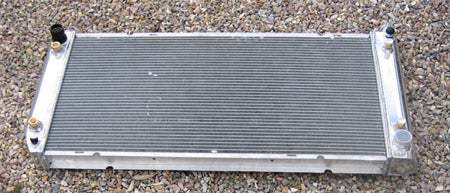
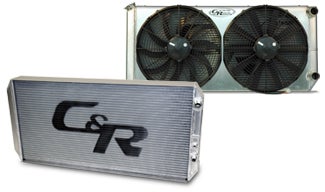
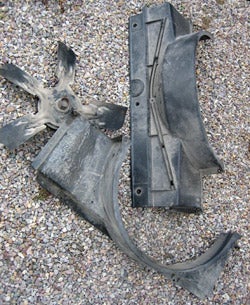
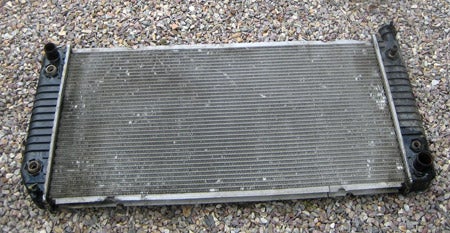
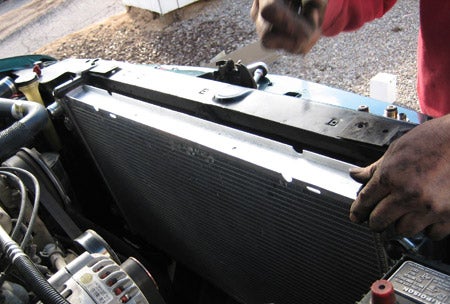
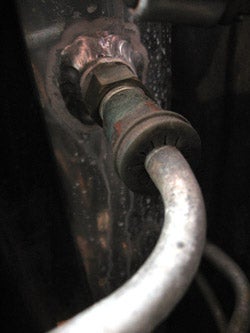
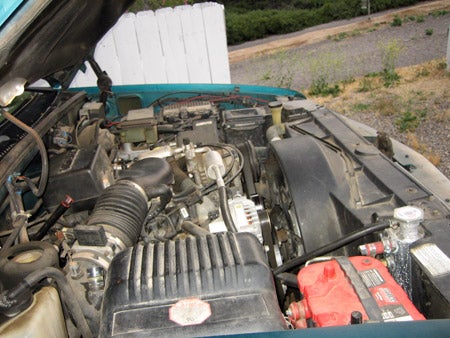
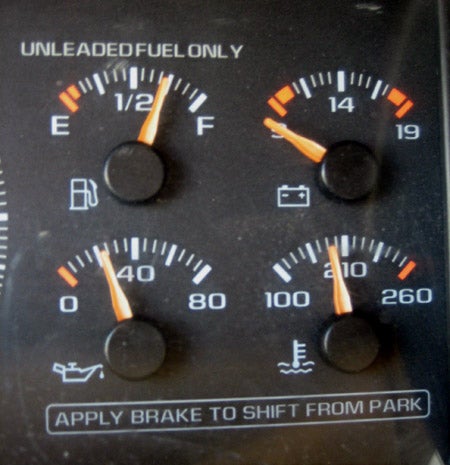

 Your Privacy Choices
Your Privacy Choices